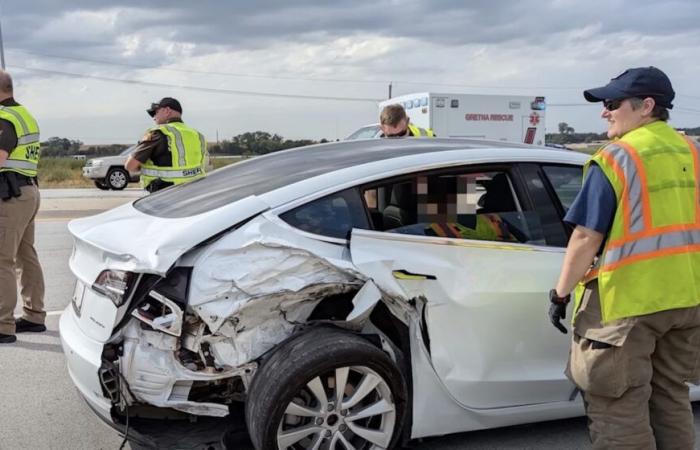Electric car news
Electric cars are gaining ground in the automotive market, and with them come new driving and safety dynamics. A recent study reveals surprising trends in accidents involving these vehicles of the future. Let’s dive into the details of this analysis which could well influence your next choice of vehicle.
A significant drop in frontal collisions
The study shows that electric cars are 6% less likely to be involved in repairable frontal collisions than their gasoline counterparts. Concretely, this translates into 26% frontal collisions for electric vehicles compared to 32% for thermal vehicles.
This difference is mainly explained by the modernity of electric vehicles. In fact, they benefit from the most recent driver assistance technologies, including:
- Staying in the lane
- Frontal collision avoidance systems
- Automatic emergency braking
These advanced safety features effectively help reduce the risk of front-end crashes, thereby providing safer driving for electric car users.


The other side of the coin: more rear-end collisions
Paradoxically, while electric cars are less involved in frontal collisions, they are more likely to be hit from behind. The study reveals that 36% of repairs on electric vehicles concern rear impacts, compared to only 28% for thermal vehicles.
This surprising statistic could be explained by a characteristic specific to electric cars: regenerative braking. This system, which allows kinetic energy to be recovered during deceleration phases, significantly modifies the vehicle’s behavior when the driver releases the accelerator.
Drivers of thermal vehicles, unaccustomed to this feature, could be caught off guard by the sudden slowing down of an electric car in front of them, thus increasing the risk of a rear-end collision.
Impact on repair costs
If electric cars seem to fare better in terms of frontal collisions, what about repair costs? The study sheds interesting light on this point.
Frontal collisions are generally 40% more expensive to repair than rear impacts. As a result, the reduced involvement of electric vehicles in this type of accident could represent a financial advantage for their owners.
However, it is important to note that repairs on electric cars remain generally more expensive and take longer to carry out than those on thermal vehicles. Several factors explain this situation:
- The massive use of original parts (OEM): 90.3% of the pieces used in electric vehicle repairs are original parts, compared to 64.4% for thermal vehicles.
- Less possibility of repairing parts: only 12.4% of pieces can be repaired on electric cars, compared to 13.9% on thermal vehicles.
These elements contribute to increased repair costs and times for electric vehicle owners.
The total cost of claims
Despite these differences in behavior and repair costs, the study reveals that the frequency of total claims is almost identical between electric and thermal vehicles. The difference is less than a tenth of a percentage.
However, when a total loss occurs, the average cost is higher for electric cars. In the third quarter, the average cost of a total claim for an electric vehicle was 32 718 euroscompared to 31,070 euros for a thermal vehicle from the 2021 model year or more recent.
This difference in cost can be explained in particular by the higher value of the components of electric cars, in particular the battery, which represents a significant part of the total cost of the vehicle.
Towards standardization of security technologies
While electric cars currently appear to have the advantage in terms of frontal safety, it is likely that this gap will narrow in the years to come. In fact, thermal vehicle manufacturers are gradually integrating the same driving assistance technologies into their most recent models.
This development should help improve overall safety on our roads, regardless of the type of engine. However, it remains crucial for all drivers to remain vigilant and adapt to the specifics of each type of vehicle.
As a driver, you can feel a little safer when an electric car is behind you at a red light. However, stay alert for thermal vehicles that could emerge behind it, potentially less prepared for its unique behavior.
The rapid evolution of the automobile market and on-board technologies will undoubtedly continue to influence accident statistics in the years to come. It will be interesting to follow these trends to understand how the transition to electric impacts not only our environment, but also our safety on the road.
Written by Albert Lecoq
Specialist in electric car buying guides, I am passionate about new technologies and am a strong supporter of the adoption of electric technology and sustainable mobility.
React to the article







